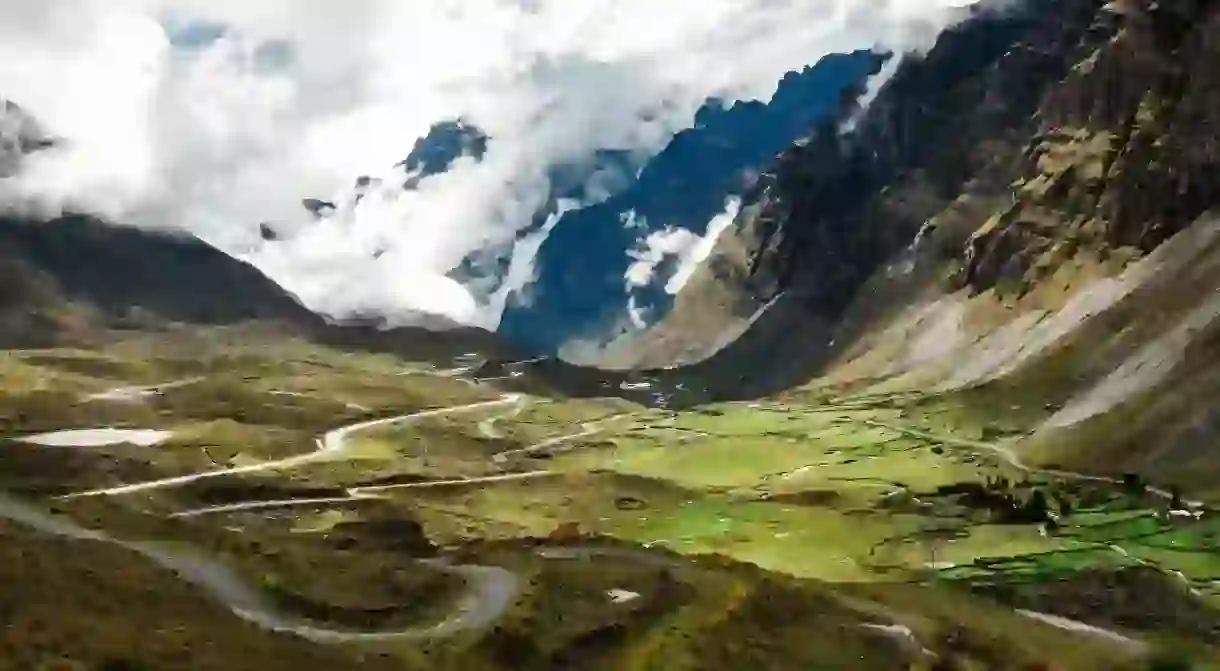10 Epic Road Trips to Take Across South America

One of the best ways to see South America is to take a road trip. With control of the wheel, visitors can explore the sights at a leisurely pace and take the time to appreciate the subtle differences between the continent’s diverse cultures and regions. Below are 10 of the continent’s best routes.
The Trans-Amazonian Highway
Built in the 1970s to create easier access to the Amazon and help integrate remote provinces in Brazil, the Trans-Amazonian Highway is expansive—and not every part may be worth seeing. According to Matador:
The interesting part is the stretch through the Amazon: roughly speaking, from the infamous Belo Monte Dam project westbound to a village called Lábrea.
According to Matador, exploring that specific section would allow visitors to avoid a 4,000-km stretch that’s not as interesting. The highway, criticized by conservationists for its effects on deforestation, has led to a number of preservation projects off the beaten path that nature-lovers might be interested in. For example, there’s the Mapinguari National Park, Balata-Tufari National Forest, and Humaitá National Forest.
Uruguay’s Route 10
The eight-hour drive between Uruguay’s Montevideo and the surfer-packed town of Punto del Diablo is a beach-lover’s delight during the South American summer months (December-February). Ruta 10 will take you through numerous popular ocean-side towns, with a detour option involving a car-carrying barge to Laguna Garzón and Route 9 to the hippie tourist town of Punto del Diablo. Driving from Punta del Este to Punte del Diablo is another option.

Argentina’s Seven Lakes
The Seven Lakes circuit in Argentina may not be the arduous, multi-day affair you associate with a “serious” road trip, but it does offer a hell of a lot of amazing natural beauty in one humble little Patagonian mountain circuit. The best time to go is during the austral spring and summer. South America Travel offers a detailed route guide.

Bolivia’s Death Road
Bolivia’s Death Road is a must for adventure travelers—especially for the extra daring who’d like to take on the challenge of navigating the road via bicycle. Despite its name, Death Road is a beautiful drive—as long as hairpin turns and lack of guard rails aren’t an issue. Kicking off at well over 10,000 feet, the road, which is also called the Yungas Road, descends into a rainforest before terminating in the Bolivian town of Coroico some five thousand feet below. Once considered the most dangerous road in the world, it was a far riskier drive before the government recently built another road linking the towns of La Paz and Coroico.

Ecuador’s Galápagos
OK, let’s be realistic, you won’t be able to drive straight to the Galápagos Islands—a plane is necessary—but you can get close. Starting in the town of Quito, this route takes you through some seriously cool volcano territory (including Cotopaxi, an active volcano) until you reach the city of Guayaquil, from where you can take a short flight to the Galápagos. On your way you’ll pass numerous small Ecuadorian towns, some of which still retain a strong indigenous presence. When to go? Depends on how many tourists you want to run into. The busiest tourist period is June-August as well as mid-December through mid-January.

Chile’s Austral
For travelers seeking a chill, nicely-paved road in South America, Chile’s Austral is not the place. But adventures seekers who don’t mind hitting a few (OK, more than a few) potholes need to get down to Chile and rent a car already! A road project that took nearly two decades to complete, the Austral is the only road connecting Chile’s northern and southern halves. On the way through it, there are mountain streams, forests, a national park, and more.

Argentina’s Route 40
Route 40 is to Argentina what Route 66 is to the United States. The legendary highway cuts through all of Argentina, making it one of the best ways to take in the diversity of the nation’s many provinces and astonishing variety of climates and geography: crushing glaciers, soaring mountains, crazy rock formations in the high desert, dinosaur remains, and more. Plus, how cool does it sound to drive to “the end of the world?” (Extra points for blasting Soda Stereo, the beloved Argentine rock band, on the way.)

Bolivia’s Salar de Uyuni
Hemmed by the Andes mountains, Bolivia’s Salar de Uyiuni salt flats are an off-white expanse extending for miles upon miles in every direction. There is no road, properly speaking. Most visitors take a tour, but there is the option to hit the flats independently as well. Given that Uyuni is the largest salt flat in the world, it shouldn’t be hard to find a truly isolated parking spot, which helps with the star-gazing.

Ecuador’s Spondylus
Launched eight years ago by the Ecuadorian government to boost tourism, the oddly-named coastal route, referring to a type of shell, is becoming increasingly popular with road-trippers. Stretching for 528 miles along the Pacific coast, the well-maintained route passes numerous nature reserves, jungles, beaches, and pre-Colombian ruins. There are ample outdoor activities to stop and do along the way.

Argentina’s 365-curve road
The dirt road contains exactly 370 switchback turns, but for some reason the number 365 stuck. The “road of the snails,” as it is also known in Spanish, links the town of Uspallata with the Villavicencio Natural Reserve. Located about 30 miles outside the city of Mendoza, Villavicencio (now owned by Danone), is the source of the commonly-seen Argentine bottled mineral water of the same name and its famous hotel (now closed). Continuing on Route 52 takes you to the Uspallata Valley, which according to Frommer’s is “one of the most beautiful sights in Argentina.” The route provides mountain views and animal sightings along the way.














